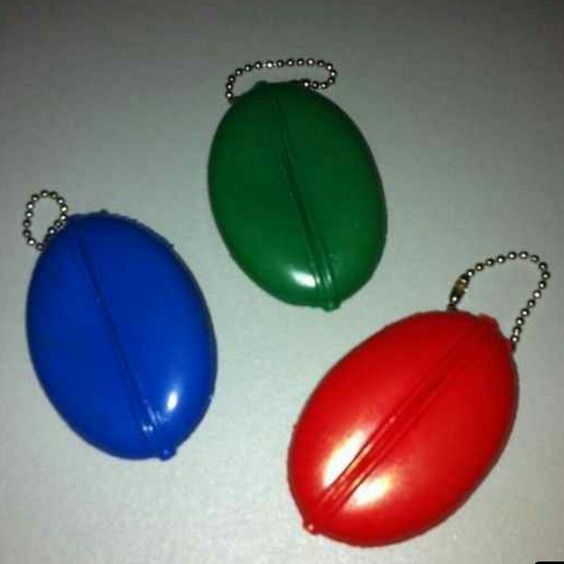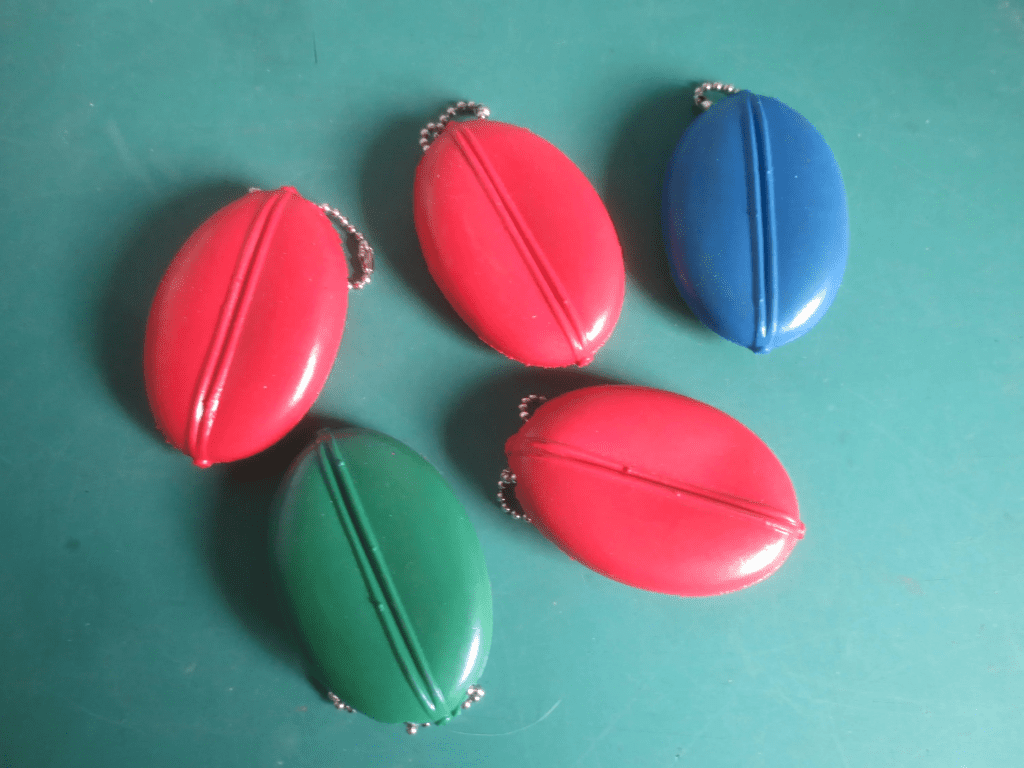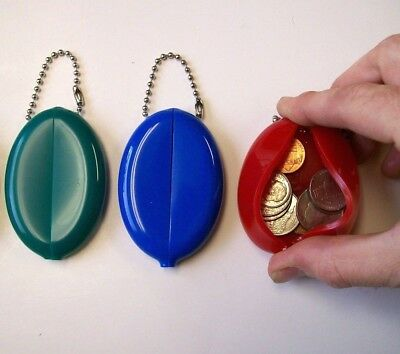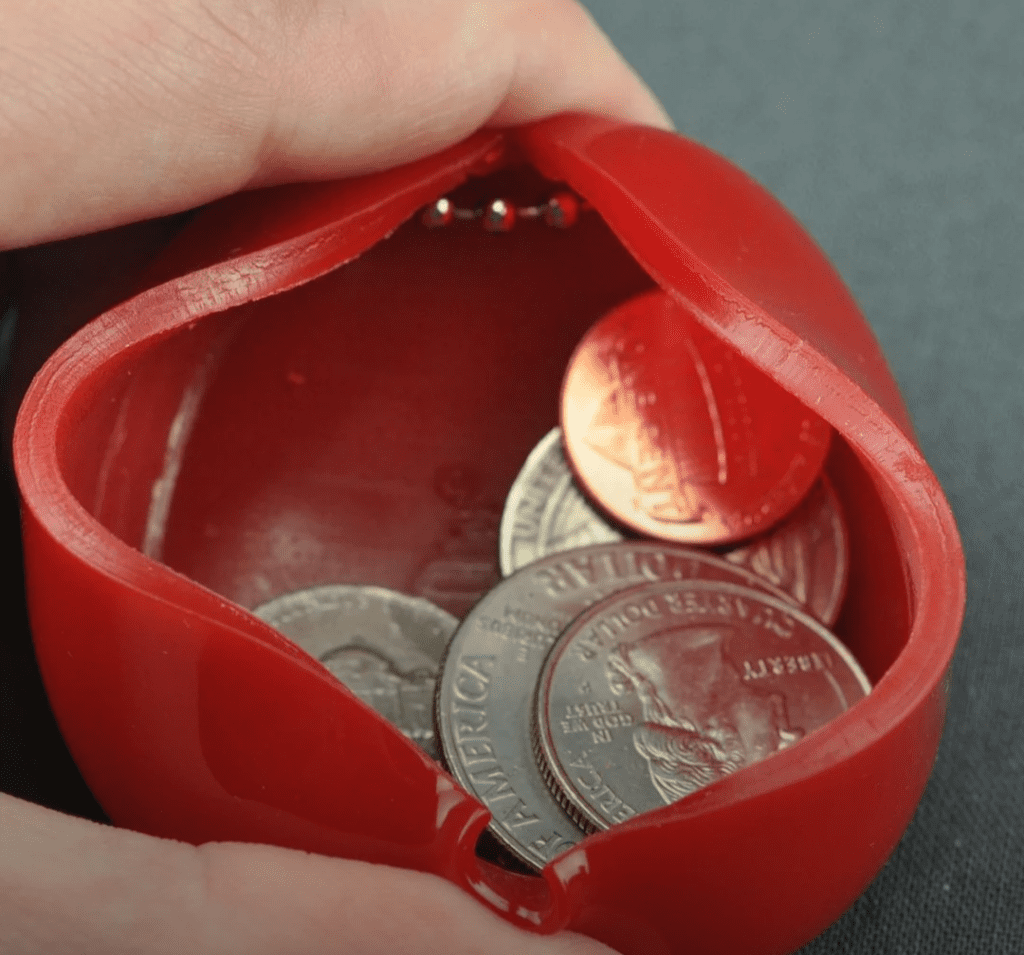In a world dominated by digital payments and tap-to-pay technologies, the humble rubber coin purse—specifically, the Quikoin—remains a surprising symbol of nostalgia and practicality. Originally created in 1951 in Akron, Ohio, this palm-sized, oval-shaped coin holder has weathered decades of change, earning a special place in the hearts of generations.
A Journey Through Time: The Birth of the Quikoin

The Quikoin was born in the post-war era when small, handy gadgets were highly valued. Designed for convenience, the rubber coin purse quickly became a household staple. Businesses, restaurants, and banks used it as a promotional tool, emblazoning their logos or catchy messages on the surface and distributing them as freebies.
By the 1950s and 60s, tens of millions of Quikoins were produced annually. From grandfathers to local shopkeepers, almost everyone had one tucked into their pocket.
What made the Quikoin so appealing? Its simplicity and functionality. The soft rubber case securely held coins, preventing the dreaded pocket jingle. Even Frank Sinatra reportedly carried a Quikoin on stage to keep his change from making noise during performances.
A Nostalgic Connection Across Generations
For many baby boomers, the Quikoin isn’t just a coin purse; it’s a vessel of cherished memories. As the third-generation leader of Quikey Manufacturing Co., the company behind the Quikoin, Burns often hears stories that illustrate the sentimental value of this little rubber gadget.
“When you hand it to a baby boomer, they’ll smile, rub it, or open it and smell it,” Burns says. “Then they’ll tell you a story, like how their Uncle Jim had one stuffed with quarters to hand out to kids.”
This ability to transport people back in time has made the Quikoin an instant symbol of nostalgia. The tactile experience of holding and opening the coin purse brings back a flood of emotions, reminding people of simpler days when cash ruled, and coins were a daily necessity.
The Fall and Resurgence of the Quikoin
By the late 20th century, the rise of credit cards and electronic payments rendered coins—and by extension, coin purses—less relevant. The Quikoin, which comfortably holds about $3 in quarters and dimes, struggled to keep pace with inflation.
In 1951, $3 could buy a fair amount, but today it’s worth just a fraction of its original value. Who needs a dedicated coin purse in a world where vending machines and parking meters now accept credit cards?
Despite this, the Quikoin has experienced a resurgence in the last few years, with over 2 million units sold annually. What’s driving this comeback? Two things: nostalgia and versatility.
Reimagining the Rubber Coin Purse for Modern Times

Although designed for coins, the Quikoin has evolved to serve a variety of unconventional purposes. Collectors and users alike have found creative ways to repurpose the compact rubber purse, transforming it into a multifunctional tool.
Some of the modern uses include:
- Storing Small Accessories: From earrings to guitar picks, the Quikoin is ideal for keeping small items safe and organized.
- Condom Carrier: Discreet and pocket-friendly, it’s a popular choice for carrying personal items securely.
- Travel Companion: Quikoins make excellent holders for loose currency or tokens when traveling, especially in places where coins are still widely used.
Burns proudly notes that these new uses have given the Quikoin a fresh lease on life, making it relevant to younger generations while still appealing to those who remember its original purpose.
The Collectors’ Craze: A Nostalgic Investment
Beyond its functional value, the Quikoin has also become a sought-after item among collectors. While the purses cost about 70 cents each when purchased in bulk, they often sell for $5-$7 on platforms like eBay.
What makes them so collectible?

- Historical Significance: As one of the top five promotional products of the 20th century, the Quikoin holds a unique place in advertising history.
- Customization: Many Quikoins bear the logos and slogans of long-gone businesses, turning them into miniature time capsules.
- Rarity: Some designs are limited editions, making them highly desirable to avid collectors.
This blend of nostalgia, history, and rarity has elevated the Quikoin from a practical tool to a cherished collectible.
The Quikoin’s Legacy in Advertising
The Quikoin isn’t just a coin purse; it’s a testament to the power of promotional products. Named one of the top five promotional items of the 20th century by the Promotional Products Association International, it stands alongside iconic items like branded pens and tote bags.
Its success lies in its blend of utility and branding. By distributing these coin purses, businesses not only provided customers with something useful but also created lasting impressions that tied their names to everyday convenience.
Adapting to the Modern Marketplace
While the Quikoin remains a beloved relic of the past, it has also adapted to contemporary trends. Sold entirely through distributors, these coin purses are no longer just a nostalgic nod to the past but a quirky addition to modern promotional campaigns.
Quikey Manufacturing Co., the parent company, continues to diversify its offerings, producing a range of customizable items like rubber keychains, luggage tags, and ID holders. Yet, the Quikoin remains their most iconic product, thanks to its rich history and ongoing appeal.
Why Nostalgia Sells: The Emotional Pull of the Quikoin

Nostalgia is a powerful force in marketing. The Quikoin’s revival highlights how emotional connections to the past can create demand for products that might otherwise seem outdated.
For baby boomers, the Quikoin represents fond memories of childhood and simpler times. For younger users, it’s a quirky, retro accessory that stands out in a sea of modern gadgets.
By bridging these generational gaps, the Quikoin proves that even the most niche products can find new life when paired with the right emotional appeal.
Conclusion
The Quikoin rubber coin purse is more than just a tool for holding change; it’s a symbol of ingenuity, nostalgia, and reinvention. From its heyday as a 1950s promotional powerhouse to its modern resurgence as a versatile accessory and collector’s item, the Quikoin continues to capture the hearts of millions.
Whether you remember it from your childhood or discover it as a vintage treasure, the Quikoin proves that even the simplest designs can leave a lasting legacy. And in a world increasingly dominated by digital trends, it’s a reminder that sometimes, the old-fashioned way still holds its charm.


